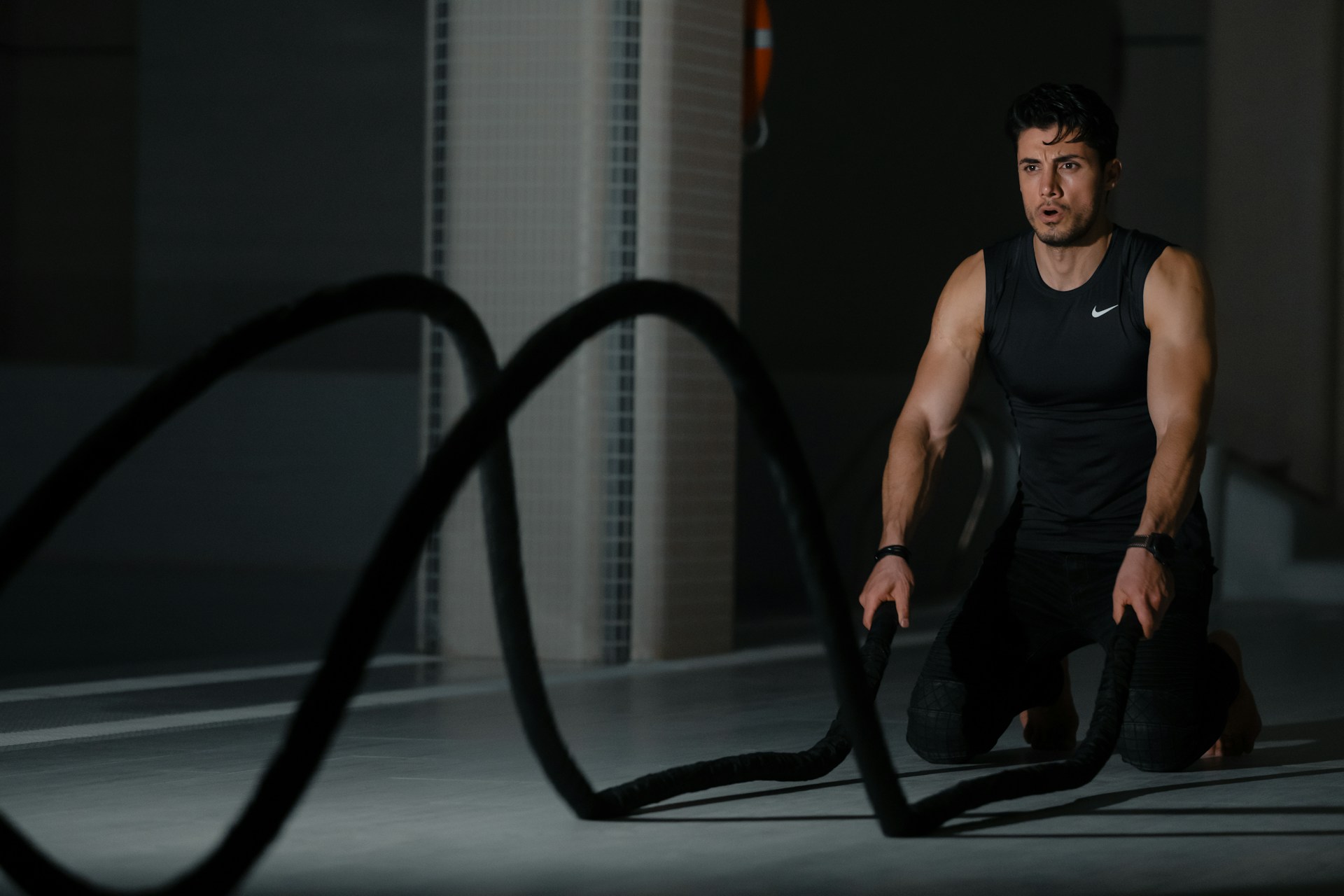Hitting a plateau in your CrossFit workouts can feel like hitting a wall. You’re showing up, pushing yourself, and staying consistent, but suddenly the progress stops. Your lifts aren’t getting heavier, your conditioning isn’t improving, and workouts that used to feel doable are now sapping your motivation. It’s frustrating, and it can be downright confusing when you’re not sure what’s changed. The reality is, performance plateaus happen to just about everyone at some point. It’s a normal part of the process.
What matters most is how you respond to it. Plateaus aren’t permanent, and they usually mean your body is adjusting and preparing for your next big leap forward. Think of it like your body needing a moment to reset before leveling up again. Whether you’re a few months into your CrossFit routine or you’ve been training for years, understanding the warning signs and knowing what steps to take next can help you keep moving forward with purpose and confidence.
Recognizing the Signs of a Plateau
The first step to breaking through any plateau is knowing you’re actually in one. That might sound obvious, but sometimes people brush off the signs without realizing their training could be more effective. Every workout doesn’t need to feel like a personal record, but if nothing’s clicking and your drive is slipping, it may be time to reassess.
Here are common signs that point to a performance plateau:
– Your strength numbers haven’t improved in weeks or months. Whether it’s your deadlift, snatch, or even pushups, your numbers have stalled
– You feel sluggish during workouts more often than not. It’s not just one off-day. You’re dragging regularly
– WOD times stay flat or even slow down. You’re giving the same effort but seeing fewer results
– You’re not recovering as quickly. Simple movements leave you sore for longer
– Workouts don’t feel rewarding anymore. Mentally or emotionally, they feel more like a chore than a challenge you’re excited for
Let’s say you’re doing CrossFit training in Ventura throughout summer with a fairly consistent three-day-a-week schedule. Your back squat has been stuck at the same weight since early July, and even though your effort is there, you’re not feeling stronger or faster. Meanwhile, your mindset is slowly shifting from “Let’s go,” to “Do I have to?” That’s a red flag that your routine needs something new.
Identifying these signs early means you can take action before small issues become major roadblocks. Plateaus don’t mean you’re stuck forever. It just means your training needs a tweak. Noticing a pattern gives you the chance to take control and recalibrate your plan instead of pushing blindly forward.
Revisiting and Adjusting Goals
Often, one reason plateaus stick around longer than needed is because goals don’t shift when your progress does. You might still be chasing a benchmark that made sense three months ago, but now your body or lifestyle may not be aligned with that target anymore. Reviewing your goals resets your direction and brings some clarity and motivation back to your training.
Here’s how you can start adjusting course:
1. Look at your original goal timeline. Were you trying to hit a lift PR in six weeks? Run a faster mile this month? Revisit those timelines and see what’s still realistic
2. Be honest about what’s working. If your goal was to gain muscle, but your strength hasn’t increased, you might need to tweak your workouts or add rest days
3. Set shorter-term checkpoints. Instead of aiming to deadlift 300 pounds, focus on hitting 10-pound increases in four-week bursts
4. Track energy, not just reps. Sometimes fatigue or sleep habits are holding you back more than the workouts themselves
It’s helpful to talk this through with someone who sees your training from the outside. A coach can spot gaps in your progress that you might miss and guide you in setting goals that match your current pace and lifestyle. A minor change like adding accessory lifts or bumping recovery days can lead to bigger improvement.
Don’t be afraid to change what success looks like as your season or life shifts. Your goals should reflect where you are now, not where you were when you first stepped inside the gym.
Varying Your Workouts to Break Through
Sticking with the same workouts each week might feel comfortable, but that can lead to a training dead end. Your body adapts. Once it’s too familiar with the same routine, the stress that used to push it begins to lose impact. Mixing things up can be the spark your system needs.
One easy way to change it up is by altering the format of your workouts. If you’ve been focused on longer WODs, try shorter, high-intensity intervals. Throw in some EMOM (every minute on the minute) sets or AMRAPs (as many rounds as possible) to challenge your conditioning in a fresh way. You don’t need to overhaul everything. Small alterations can get results.
Ideas to bring variety:
– Swap barbell lifts for kettlebell or dumbbell versions
– Add one strength-only day per week if your current plan is metcon-heavy
– Try new gymnastic skills like rope climbs or handstands to boost body control
– Work cardio tools you usually skip, like the ski erg or rower
– Hit an outdoor workout once a week, especially with Ventura’s mild local weather
One athlete had followed the same pattern for weeks: strength training for 20 minutes and then a 12-minute WOD. When they flipped the script by starting the week with a longer cardio-based chipper and lifted later in the week, their energy returned. Lifts that had stalled began to move up again. Sometimes switching the order or timing of workouts is enough to breathe new life into your routine.
Variety wakes up your body, but it also makes workouts mentally exciting again. That boost in mindset alone can help you work harder without even realizing it.
Focus on Recovery and Fuel to Reboot Your Progress
Training is just one side of the equation. If your recovery and nutrition aren’t in check, you might burn out or stall. Recovery is where your body repairs and grows, and your food is what fuels that process. Both need attention to make gains.
Take a look at your rest, sleep, and meal habits. Are you giving your body time to bounce back? Rest can feel lazy for active people, but it’s one of the smartest strategies for long-term strength.
Try these recovery steps:
– Build in at least one rest day per week, maybe two if workouts have been intense
– Use active recovery like walking, stretching, or swimming
– Add 10- to 15-minute mobility work at the end of your sessions
– Stay hydrated—Ventura’s sunny climate can increase fluid needs
– Make sure you’re eating balanced meals with protein, carbs, and enough calories overall
Food doesn’t need to be perfect, but it does need to support the energy you’re outputting. Skipping meals or under-eating can backfire. Timing matters too—having balanced meals and refueling after workouts can set up the next day’s performance.
When recovery and nutrition match your training, plateaus often pass. You rebuild stronger, and workouts start to feel better again.
Get More Out of CrossFit Training in Ventura with Private Coaching
If you’ve tried mixing things up, checked your recovery, and revisited your goals but still don’t feel progress, private coaching might be what’s missing. Some guidance from a trained eye can lead to faster and more effective changes at any level.
Private training gives you:
– Workouts tailored to your goals, body, and schedule
– Real-time feedback on form, movement, and pacing
– Personalized programming that adapts as you do
– An accountability partner to help you stay consistent
– A better sense of your wins and where to improve, week to week
In Ventura, your training might shift due to seasonal changes or access to outdoor activities. A private coach at Beachside Crossfit can help you use that variety to your advantage. Whether your aim is conditioning, strength, or confidence, a personal structure and support system can open new momentum.
Sometimes getting someone in your corner is all it takes to get back on track with better focus and better results.
Don’t Let One Phase Define the Whole Plan
Plateaus can feel heavier than the barbell. They come out of nowhere, and suddenly that streak of steady progress goes quiet. It’s tempting to think something is wrong or to start second-guessing your effort. But this part of the journey is normal, and it doesn’t last forever.
Progress isn’t one straight climb. It has loops, hills, and moments to pause and reset. And that reset can lead to your biggest wins yet. Whether you’re making sense of a slow phase or training under Ventura’s summer sun, all you need is one solid step forward to start building momentum again.
Tweak your workouts. Rest when needed. Try something new. Reach out for coaching. Don’t stop moving just because things slowed down. Those plateaus are where real growth begins.
Whether you’re just starting or looking to push through a plateau, embracing new challenges can ignite progress. At Beachside Crossfit, we offer flexible and tailored programs to fit your unique goals. Discover how CrossFit training in Ventura can transform your routine and elevate your performance. Ready to take the next step? Explore our options to kickstart your journey.




